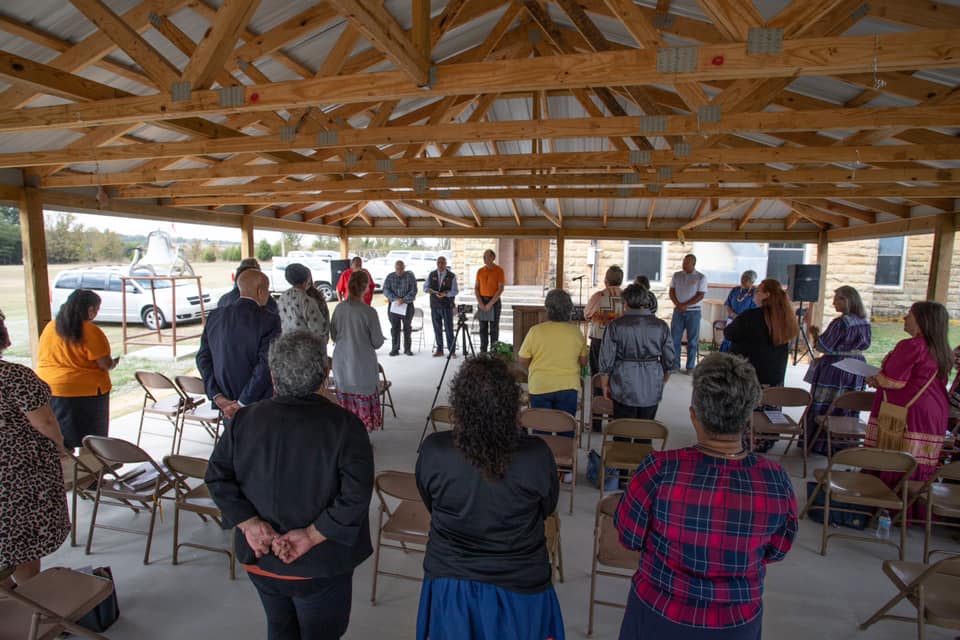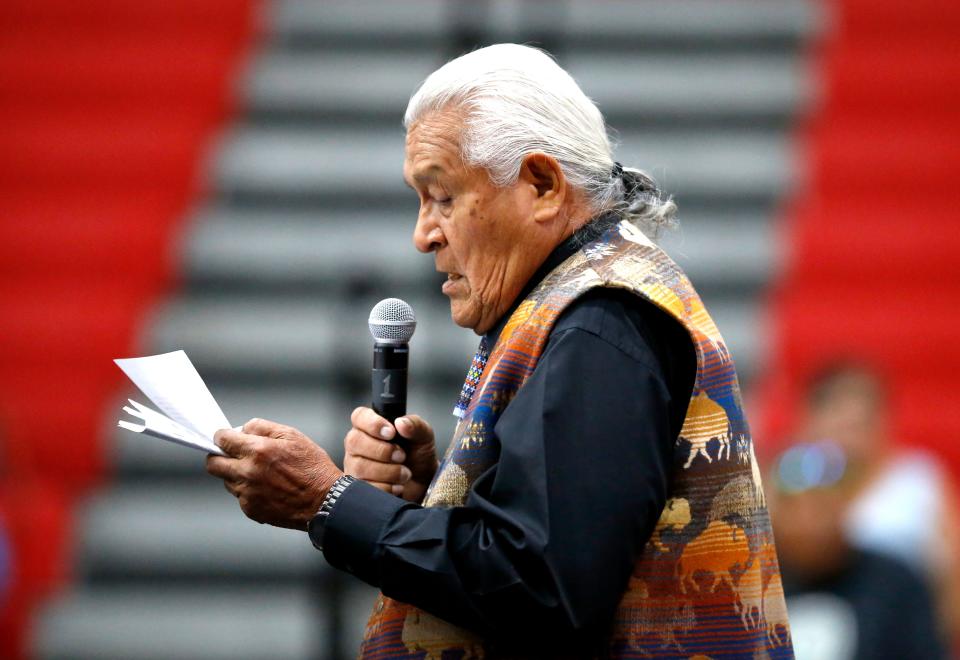Years of research into Indigenous boarding schools in Oklahoma compiled in new book
A Native American history scholar said Indigenous boarding schools run by the Catholic Church in Oklahoma were uniquely different from their counterparts in other parts of the country.
That's because the schools were often embedded in Native American communities and not far away from the students' families like similar schools in places like South Dakota and other states. Bryan Rindfleisch with Marquette University said such information will be incorporated into a new book as a result of research he conducted for the Oklahoma Catholic Native Schools Project.
"What happens in Oklahoma because it's Indian Territory is that there's a relationship or leverage that Native communities exercise over these schools that you don't see in all of these other boarding schools because they're usually away from reservations — off the beaten path," Rindfleisch said.
More: Legacy of Native American boarding schools comes into view through a new interactive map
Rindfleisch was hired by the Archdiocese of Oklahoma City, Tulsa Diocese and St. Gregory's Abbey to conduct the research as part of the Native Schools project launched by the faith groups in fall 2021. Along with Rindfleisch's scholarly research, the project has included listening sessions held at various churches around the state and the collection of the oral histories of Native Americans who attended the boarding schools and their descendants.
Research examines history of Indigenous boarding schools following discovery of graves in Canada
The project focuses on Catholic boarding schools for Native Americans that were operated from 1880 to 1965 in Oklahoma. The first one opened in Konawa in 1880 and closed in 1926. The last boarding school, St. Patrick’s in Anadarko, closed in 1965. They were all overseen by various Catholic religious orders.
The Native Schools Project came in the wake of a reckoning that began in Canada after the May 2021 discovery of 215 unmarked graves of Indigenous children by Canada's Tk’emlúps te Secwepemc First Nation at the Kamloops Indian Residential School in British Columbia. Shortly afterward, U.S. Interior Secretary Deb Haaland launched a comprehensive review of the federal government's role with Indigenous boarding schools, aiming to discover and highlight the intergenerational effect of the schools and the trauma they created for hundreds of Indigenous children and families.
In May 2022, the Interior Department published a federal report based on its investigation, underscoring the wide-ranging forms of abuse that Native students were forced to endure at the boarding schools, all with the purported goal of helping them assimilate into white culture. In June 2022, Oklahoma — which had 76 of the schools, more than any other state ― was the first stop on Haaland's "Road to Healing" listening tour to hear boarding school survivors talk about their experiences.
Rindfleisch said he was chosen for the research portion of the project because of his scholarly work in Native American history, but also because the Bureau of Catholic Indian Missions' records are kept at Marquette, a Catholic and Jesuit university in Milwaukee, Wisconsin, where he is an associate professor of Native American studies. He said he examined roughly 350 boxes of documents while conducting research for the boarding schools project.
He said the book resulting from his research will be published soon by Marquette University Press. The book will be available for sale to the general public but Rindfleisch said the Oklahoma Catholic Church will likely purchase numerous copies and distribute them to Native American tribes. Michael Scaperlanda, chancellor for the Archdiocese of Oklahoma City, confirmed that the Catholic Church would likely see that the book is disseminated among tribal groups.
More: Catholic Church historian looking for 'honest assessment' of Indigenous boarding schools in Oklahoma

Scaperlanda said he reviewed a draft copy of Rindfleisch's research for factual errors and he made some suggestions which the scholar was free to incorporate or not.
The Oklahoma City archdiocese leader said he wanted to emphasize that the report and the resulting book is intentionally independent of the Oklahoma Catholic Church.
"What we asked him to do is to write about the good, the bad and the ugly. He did give us that," Scaperlanda said.
Scaperlanda said he is hoping that Rindfleisch will agree to talk about his research at a public forum that could be scheduled after the book containing his research is published.
Important distinction
While details outlined in Rindfleisch's book won't be disclosed until it is published, both Rindfleisch and Scaperlanda said that one aspect of the boarding schools that stood out to them was the unique relationship that many of the tribes had with the religious leaders of the Catholic-run boarding schools in Oklahoma.
Many of the residential schools across the country were run by the federal government and/or religious groups. It's widely known that the two often worked in tandem.
More: Days of Native Americans at boarding schools are being brought to light with professor's work
Rindfleisch said many of the boarding schools in Oklahoma were different from those run by the federal government/religious groups in other parts of the country because the Oklahoma schools were often embedded in Native American communities.

Rindfleisch said this distinction meant that tribal communities often had leverage to use when they disagreed with something occurring at a boarding school. And he said they used that to the advantage of the students and their families. Thus, some of the schools were used for education purposes but also some tribal communities utilized the schools for things such as housing orphans.
"The interesting thing is the ways in which these bureau schools were just utterly incorporated into the communities to use for their own purpose," Rindfleisch said.
He said tribal communities resisted some of the assimilation efforts in the Oklahoma boarding schools by exercising their political and economic control.
Rindfleisch said the Catholic Church had to respond when Native American students, families and communities "battered down the doors" of the schools when they knew that religious leaders were guilty of wrongdoing. Sometimes, parents threatened to take their children out of the schools ― and convinced their relatives to do the same — if the wrongs were not corrected, Rindfleisch said. These were significant developments because the schools were so poorly funded that they depended on money from some of the tribal nations to stay afloat.
More: 'Listening session' on Catholic boarding schools stirs emotions
Scaperlanda said this information was interesting to him because it meant that in some cases, tribal communities used their agency to bring about solutions to problems their students were experiencing.
"If they didn't like a priest or a sister, they complained, and if that didn't work, they would just pull their kids out," he said.
By contrast, Rindfleisch said parents and relatives of school students in other parts of the country had to travel great distances to find out how their young people were faring amid the day-to-day operation of the schools.
This article originally appeared on Oklahoman: New book examines Indigenous boarding schools in Oklahoma

